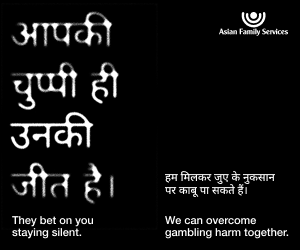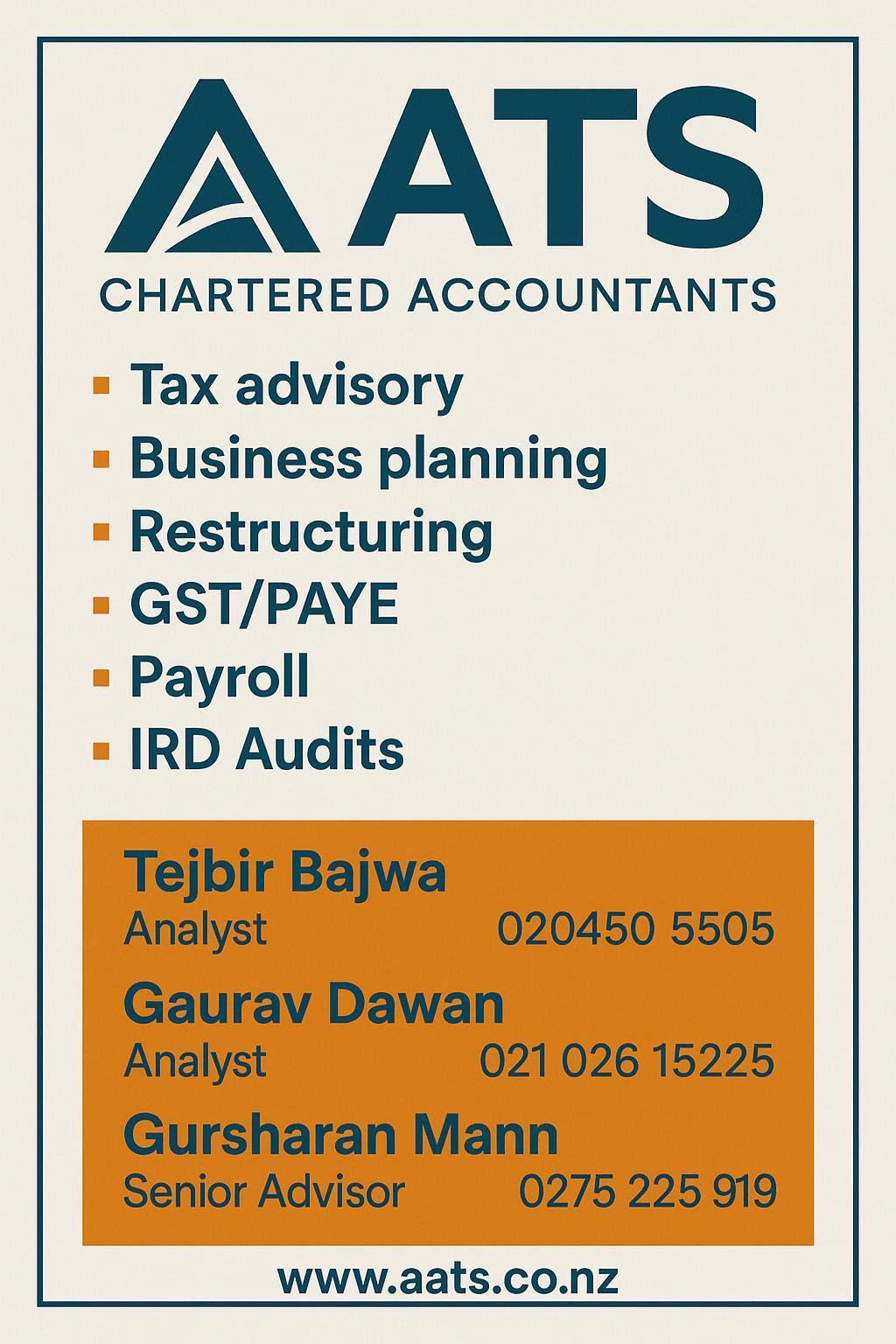Indian Household Median Income Isn’t As Bad As You Think

An analysis of data from the 2023 Census reveals that Kiwi Indians earn more than the average New Zealander each year.
This contrasts with a perception of Indians in New Zealand predominantly driving taxis and employed in low-skilled and minimum wage jobs.
Latest Census data shows the median income of Indian adults in New Zealand was $51,600.
By comparison, the median income for the country's total population was $41,500, the data shows.
The latest Census shows more than 40 percent of the Indian population were employed in a managerial or professional capacity, while just under 7 percent worked as labourers.
The remainder worked in other occupations, including sales, clerical and administrative jobs, and construction.
What's more, about 73 percent of Kiwi Indians held full- or part-time employment, with a further 2.8 percent unemployed and 24.5 percent not in the workforce, the data shows.
In terms of academic qualifications, Kiwi Indians were notably above the national average, the data shows.
The Census data shows that more than 65 percent of Indian adults held a post-school qualification compared to 54 percent of the total population.
Indeed, 26.1 percent held a bachelor's degree and level 7 qualification. By comparison, the national percentage stood at 15.5.
Around 8.4 percent of Indians held post-graduate and honour's degrees, while 10.7 percent held a master's degree, the data shows.
A total of 292,092 people in New Zealand claimed Indian heritage, or about 5.8 percent of the population, according to the latest data.
The Indian community is now the country's third-largest ethnic group.
The Indian community's median age of 32.4 years was significantly lower than New Zealand's total population (38.1 years), the data shows.
The 2023 data also shows that almost 73 percent of Indians living in New Zealand were born overseas.
Almost half of Kiwi Indians born overseas relocated to New Zealand less than 10 years ago, which reflects the large influx of immigrants from South Asia in recent years.
The diversity of the community was reflected in the languages its members claimed to speak, with more than half speaking more than one language, according to the latest data.
Just 21.4 percent of all New Zealanders spoke more than one language nationwide, the data shows.
It's worth noting that 13.7 percent of Indians spoke three languages, while 2.5 percent spoke four.
Almost 90 percent of the Indian community could communicate in English, while 25.2 percent spoke Hindi and 16.4 percent spoke Punjabi.
Almost a third could communicate in other languages, including Indian languages such as Gujarati, Malayalam, Tamil, Telugu and Marathi. A small number spoke Fiji-Hindi.
Compared to the 4.9 percent of the country's population who identified as LGBTIQ+, latest Census data shows that just 2.7 percent of Kiwi Indians identified similarly, with 56.7 percent having a spouse and 36.6 percent being "non-partnered".
Most of the Indian community - 90.7 percent - lived in a one-family or a two-family household with or without other people, the data shows.
Stats NZ defines a household as a "group of related or unrelated people that live together in the same private dwelling. ... [The household] can also be a person who lives alone".
Auckland was the preferred location for Kiwi Indian households, with more than 60 percent living in the country's biggest city. The Wellington region ranked second (9.5 percent), closely followed by Waikato (8.9 percent) and Canterbury (7.4 percent).
In Auckland, almost 15 percent of the country's Indian population was divided between the adjoining local board areas of Howick and Otara-Papatoetoe.
Local boards in Mangere-Otahuhu (3.1 percent), Manurewa (5.7 percent), Papakura (5.3 percent) and Franklin (1.7 percent) also housed more than 15 percent of Kiwi Indian households, essentially meaning that a third of the community called South Auckland home.
The presence of Kiwi Indians was also substantial in West Auckland, with about 15 percent of the total population living in the local board catchment areas of Henderson-Massey (4.5 percent), Whau (5.2 percent) and Puketapapa (4.4 percent).
Indians are generally known for their faith, with just 8.7 percent claiming "no religion" in the Census.
Of those who professed to be religious, just under half were Hindu, 15.6 percent were Christian and 8.2 percent were followers of the Islamic faith.
Almost 19 percent of Kiwi Indians followed other religions (including Sikhism), beliefs and philosophies, the data shows.
An analysis of data from the 2023 Census reveals that Kiwi Indians earn more than the average New Zealander each year.
This contrasts with a perception of Indians in New Zealand predominantly driving taxis and employed in low-skilled and minimum wage jobs.
Latest Census data shows the median income...
An analysis of data from the 2023 Census reveals that Kiwi Indians earn more than the average New Zealander each year.
This contrasts with a perception of Indians in New Zealand predominantly driving taxis and employed in low-skilled and minimum wage jobs.
Latest Census data shows the median income of Indian adults in New Zealand was $51,600.
By comparison, the median income for the country's total population was $41,500, the data shows.
The latest Census shows more than 40 percent of the Indian population were employed in a managerial or professional capacity, while just under 7 percent worked as labourers.
The remainder worked in other occupations, including sales, clerical and administrative jobs, and construction.
What's more, about 73 percent of Kiwi Indians held full- or part-time employment, with a further 2.8 percent unemployed and 24.5 percent not in the workforce, the data shows.
In terms of academic qualifications, Kiwi Indians were notably above the national average, the data shows.
The Census data shows that more than 65 percent of Indian adults held a post-school qualification compared to 54 percent of the total population.
Indeed, 26.1 percent held a bachelor's degree and level 7 qualification. By comparison, the national percentage stood at 15.5.
Around 8.4 percent of Indians held post-graduate and honour's degrees, while 10.7 percent held a master's degree, the data shows.
A total of 292,092 people in New Zealand claimed Indian heritage, or about 5.8 percent of the population, according to the latest data.
The Indian community is now the country's third-largest ethnic group.
The Indian community's median age of 32.4 years was significantly lower than New Zealand's total population (38.1 years), the data shows.
The 2023 data also shows that almost 73 percent of Indians living in New Zealand were born overseas.
Almost half of Kiwi Indians born overseas relocated to New Zealand less than 10 years ago, which reflects the large influx of immigrants from South Asia in recent years.
The diversity of the community was reflected in the languages its members claimed to speak, with more than half speaking more than one language, according to the latest data.
Just 21.4 percent of all New Zealanders spoke more than one language nationwide, the data shows.
It's worth noting that 13.7 percent of Indians spoke three languages, while 2.5 percent spoke four.
Almost 90 percent of the Indian community could communicate in English, while 25.2 percent spoke Hindi and 16.4 percent spoke Punjabi.
Almost a third could communicate in other languages, including Indian languages such as Gujarati, Malayalam, Tamil, Telugu and Marathi. A small number spoke Fiji-Hindi.
Compared to the 4.9 percent of the country's population who identified as LGBTIQ+, latest Census data shows that just 2.7 percent of Kiwi Indians identified similarly, with 56.7 percent having a spouse and 36.6 percent being "non-partnered".
Most of the Indian community - 90.7 percent - lived in a one-family or a two-family household with or without other people, the data shows.
Stats NZ defines a household as a "group of related or unrelated people that live together in the same private dwelling. ... [The household] can also be a person who lives alone".
Auckland was the preferred location for Kiwi Indian households, with more than 60 percent living in the country's biggest city. The Wellington region ranked second (9.5 percent), closely followed by Waikato (8.9 percent) and Canterbury (7.4 percent).
In Auckland, almost 15 percent of the country's Indian population was divided between the adjoining local board areas of Howick and Otara-Papatoetoe.
Local boards in Mangere-Otahuhu (3.1 percent), Manurewa (5.7 percent), Papakura (5.3 percent) and Franklin (1.7 percent) also housed more than 15 percent of Kiwi Indian households, essentially meaning that a third of the community called South Auckland home.
The presence of Kiwi Indians was also substantial in West Auckland, with about 15 percent of the total population living in the local board catchment areas of Henderson-Massey (4.5 percent), Whau (5.2 percent) and Puketapapa (4.4 percent).
Indians are generally known for their faith, with just 8.7 percent claiming "no religion" in the Census.
Of those who professed to be religious, just under half were Hindu, 15.6 percent were Christian and 8.2 percent were followers of the Islamic faith.
Almost 19 percent of Kiwi Indians followed other religions (including Sikhism), beliefs and philosophies, the data shows.









Leave a Comment